NanoComposix fabricates a variety of precisely engineered and highly characterized titanium dioxide nanoparticles on a custom basis. Our formulations exhibit well-defined sizes, morphologies – including nanorods, nanowires, and coatings – and adjustable surface chemistries. TiO2 materials from nanoComposix are unagglomerated and ideally suited for use as reference materials, for nanotoxicology investigations, and a variety of other R&D applications.
Titania Nanorods


Titania nanorods from nanoComposix are 1D crystalline (anatase-phase) nanoparticles with narrow length and diameter distributions, a high refractive index, and strong UV absorption properties. The nanorods are:
- Surface functionalized with stearic acid, and disperse readily in both nonpolar and polar organic solvents
- Uniform in size and morphology: an average length of 55 nm and diameter of 15 nm
- Provided in n-butanol at a TiO2 mass concentration of 1 mg/mL
Properties of Titanium Dioxide
The unique morphology and homogeneity of our titania nanoparticles makes them ideal for use in a variety of applications, including:
- Photocatalysis
- Photovoltaics
- Facet-selective catalysis
- Advanced pigments
- High refractive index optical coatings
Due to the high refractive index (~2.5) and large bandgap (~3.2 eV) of anatase TiO2, titania nanoparticles have excellent optical properties and scatter strongly throughout the visible spectrum. TiO2 exhibits a much “whiter” color than lower refractive index materials such as silica; for this reason, TiO2 is far and away the most ubiquitous white pigment in the world. Small, well-dispersed particles, such as our titania nanorods, appear opalescent in solution, providing unique optical effects for coatings and cosmetics.
Titania is also notable for both its strong absorbance in the UV spectrum and its exceptional chemical stability, making it one of the most popular materials used in photocatalytic applications. With an appropriate co-catalyst deposited on its surface, titania is able to split water into hydrogen and oxygen under solar irradiation. When combined with an appropriate dye, titania nanoparticles are a critical component in dye-sensitized solar cells (DSSCs), and more recently they have been investigated for use in other classes of photovoltaics. The finely tuned structures of our TiO2 nanomaterials make them interesting candidates for basic energy research, as the effects of the particle morphology on carrier lifetime and transport may help facilitate improvements for solar energy conversion applications.
In addition to applications as a pigment and a UV-active photocatalyst, titania nanoparticles can be utilized in lieu of silica in instances where silica performs poorly. For instance, unlike silica, which is an acidic oxide and readily dissolves in high pH conditions, titania is a basic oxide and is stable at all but the lowest pHs. TiO2 coatings on plasmonic nanoparticles induce a much greater shift in the plasmon band versus silica shells due to the high refractive index of titania. Titania surfaces also exhibit unique selective adsorption properties for certain important biomolecules, notably phosphorylated proteins, a property not commonly seen in unmodified silica.
The surfaces and dispersion media of our titania nanorods can be tuned for your desired application. Contact us for more information on our custom fabrication capabilities.
Custom Titania Nanomaterials from nanoComposix
NanoComposix has extensive experience with the synthesis and development of complex titania nanomaterials and coatings, and has produced a broad assortment of well-characterized, precisely-tuned TiO2 nanoparticles on a custom basis for many customers. We are able to synthesize titania nanomaterials of varying sizes, morphologies, crystal phases, surface functionalities, and solubilities.
Contact us today to inquire about your own custom titania nanoparticle needs.
Titania Nanowires


Titania nanowires represent an extremely high aspect ratio 1D TiO2 nanomaterial, having an average length of 600 nm and an average diameter of 20 nm. This material is dispersible in water and polar, aqueous-compatible solvents. The dimensions and crystalline phase of the nanowires can be tuned by varying the reaction conditions during the synthesis.
Spherical Titanium Dioxide
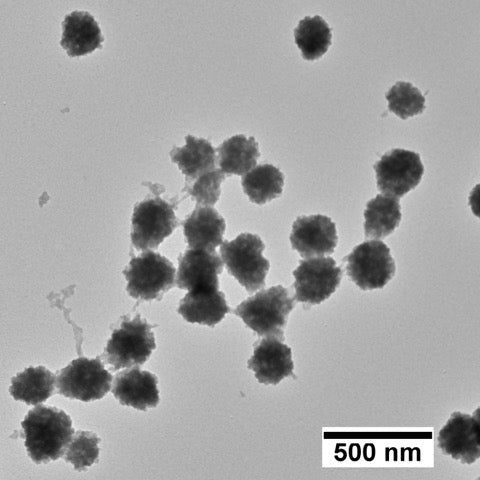

NanoComposix manufactures a variety of spherical titania nanoparticles for our customers. The materials are extensively characterized and can be provided in a wide range of solutions, sizes, and crystalline phases. Amorphous titania exhibits a high refractive index and excellent dispersibility in water and alcohols, whereas crystalline titania (i.e., anatase or rutile) features an even higher refractive index and excellent photocatalytic performance.
Titania Coatings on Nanoparticles
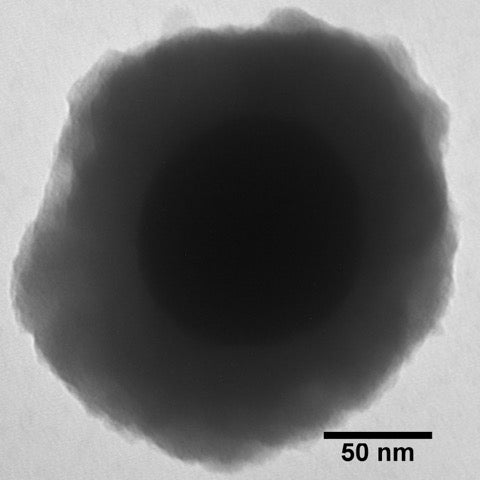
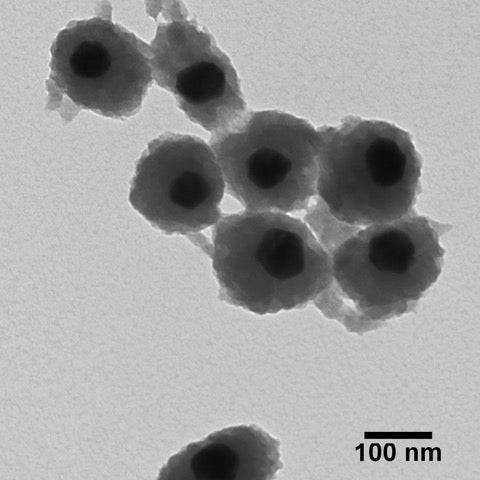
We are also capable of coating various nanomaterials with a titanium dioxide shell; please inquire to see whether your material of choice can be coated with titania. The crystallinity of the shell can be controlled with calcination techniques. Amorphous titania shells exhibit a high refractive index and excellent dispersibility in water and short-chain alcohols; crystalline titania shells feature still higher refractive indices and enhanced photocatalytic properties. A shell of highly crystalline TiO2 can dramatically red-shift the maximum extinction of a plasmonic nanoparticle core and is an additional tool for developing nanoparticle formulations with a specific color response.
Surface Functionalized Titania Nanoparticles
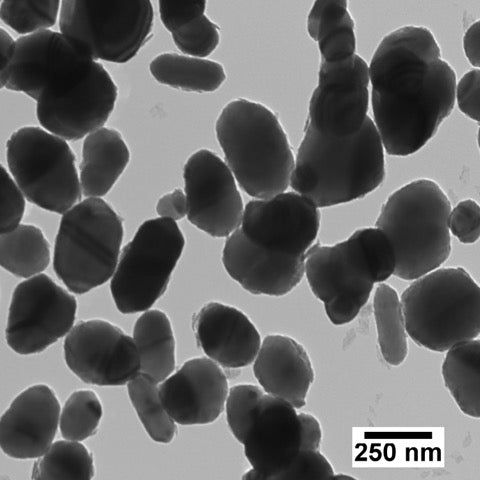
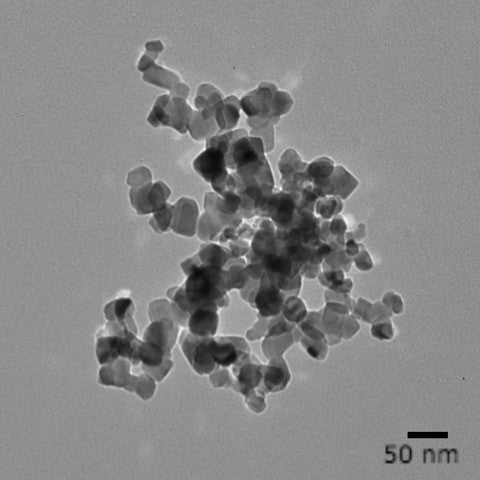
All of our titania particles can be surface functionalized. Depending on the customer’s needs, we are able to modify the surface of TiO2 with a variety of organic ligands, both physisorbed and covalently linked. Methods are available to bind silanes to the surface of TiO2 nanoparticles; for example, hydrophobic alkyl silanes can be used to increase the compatibility of TiO2 with polar organic solvents.
